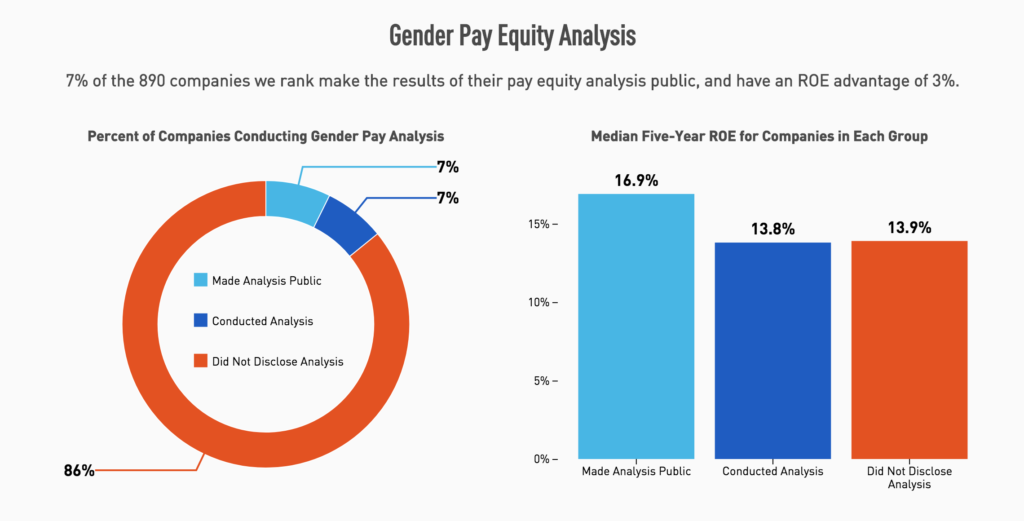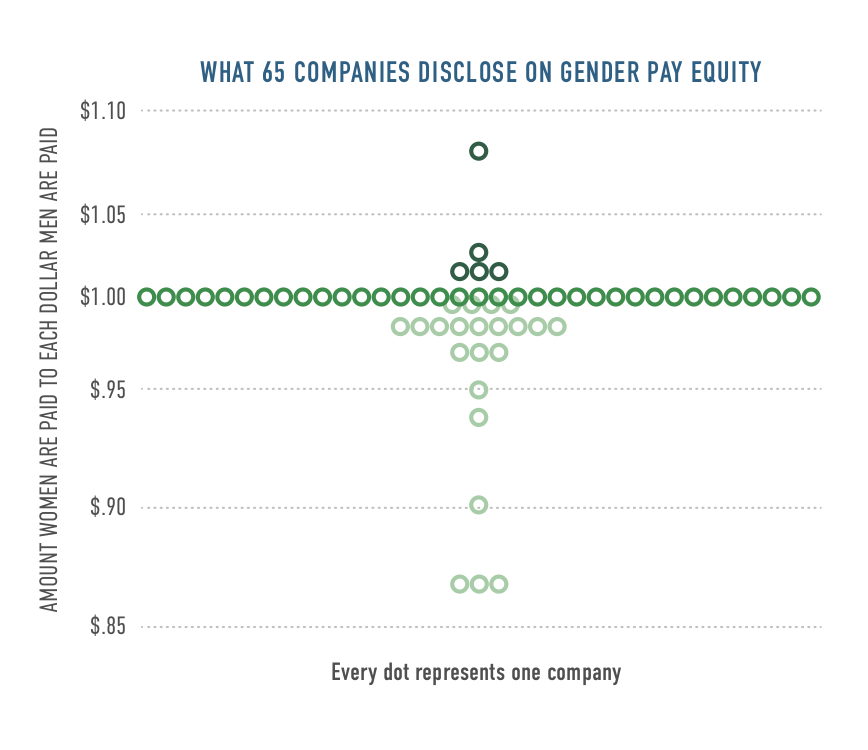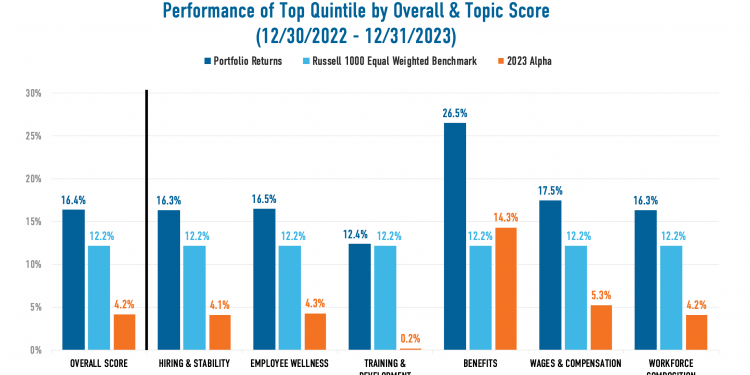Here’s How Companies Are Performing on Gender Pay Equity Today
There’s something fundamental about being counted. It means that we’re seen, that we’re valued. What we’re paid is part of that. Despite a century and a half of fighting for equal rights, it’s amazing that equal pay for equal work – of being fairly compensated and counted for it – is still being debated. I’m sure most saw the news that the U.S. women’s soccer team filed a lawsuit against the U.S. Soccer Federation for allegedly paying them just 38 cents (!) to the dollar of their male counterparts, despite their indisputable excellence and outperformance. It was announced that the case would go into mediation this week, another dogged step in the very long journey toward pay equity in women’s sports.
But of course, the gender pay gap persists across the board, from fast food to tech, and everywhere in between. And with the 2020 Democratic candidates taking the stage this week for the primary debates, their views on this persistent, national issue have the potential to catalyze more rapid action around equal pay in the coming years.
At JUST Capital we’ve found, year after year, that the American public identifies worker issues – including the provision of equal pay to men and women – as their top priority for just business behavior.
So how is corporate America doing on this issue? In 2018, we found that just 14% of the largest public U.S. companies disclosed that they’d conducted a gender pay equity analysis, and of those, only about half published their results.

Cheers and thank you to the 7% – or the 65 companies that are leading on this issue – we’ll get back to them in a moment. But first, we want to highlight that there is a business case here. The companies that made their analysis public also generated a Return-on-Equity three percentage points higher than their peers – showing that when companies prioritize transparency around gender pay equity, it can be a win-win for both employees and shareholders.
And what did our analysis of the disclosures show? For context, according to the U.S. Census Bureau, the typical woman working full-time, year round makes about 81% of the typical man working the same. Of the 65 companies that disclosed their analysis, about half shared that they had reached gender parity – where women are paid $1 to each dollar their male counterparts in the same occupation and at the same skill level. Five announced that they actually paid women up to seven cents more than men, and 25 companies shared that women were being paid somewhere between 86 and 99 cents to the dollar earned by men. No company disclosed a gender pay gap of less than 86 cents, suggesting that there may be a reticence among corporate leaders to disclose more significant pay discrepancies.

These corporations are taking an important step forward in disclosing details about the state of gender pay equity in America. Despite Peter Drucker’s “You can’t manage what you can’t measure” mantra, federal oversight of pay equity reporting is being litigated in the courts, creating uncertainty around a national mandate and how to actually measure pay equity (e.g. by job type, experience level, overall). The revised EEO-1 form held up in the courts would require employers to report wages and total hours worked for all employees by race, ethnicity, and sex within 12 proposed pay bands – a major step toward establishing consistent reporting requirements on this crucial issue.
Despite ongoing legislative uncertainty, these 65 companies – across 26 industries from retail to software to banks – should be applauded for taking the lead in performing an analysis and disclosing high-level results, an essential first step to addressing the persistent gender pay gap in the U.S. today. Check out the list of leaders below – and what they disclose women make for each dollar earned by their male colleagues:
In our forthcoming 2019 Rankings (releasing November 12), JUST Capital will be taking a closer look not only at whether companies disclose policies around core workplace issues – like gender pay equity, diversity & inclusion, and paid parental leave – but also at how they’re doing. Have they achieved pay parity? Are they meeting their internal diversity targets? How many weeks of paid leave do they offer new parents? With greater transparency comes greater understanding – and the ability to incentivize a race to top to create a more just, equitable, and inclusive marketplace that better serves all Americans.
Interested in learning more? Sign up for the JUST Report, an essential weekly roundup of news and insights on the future of capitalism, and the movement to build a more just and equitable marketplace in America today.






